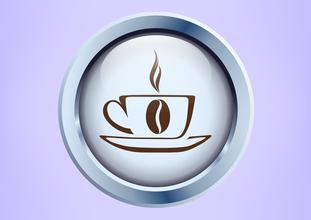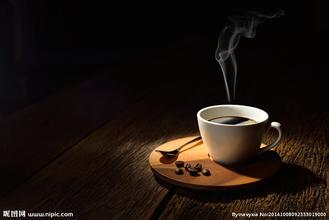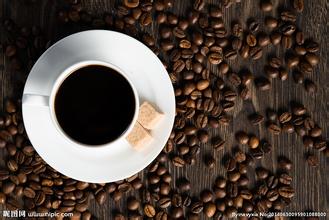Introduction to the price of the most expensive musk cat shit coffee in the world
London Peter? Peter Jones launched a charity promotion of Luwak (or Indonesian civet coffee) (Kopi luwak) and Jamaican Blue Mountain Coffee (Jamaican Blue Mountain), which sold for 50 pounds ($99) a cup. In the West, the retail price is usually close to 600 pounds per kilogram, while Indonesian producers sell unroasted coffee beans for about 100 pounds per kilogram, but that is still several times the price of the best Arabica beans.
Its exaggerated price is due to the unique process of coffee beans going from bushes to cups. When wild palm cats hunt at night, they choose scarlet berries (components of Arabica and Robusta varieties) as a side dish for staple wild birds and other small animals. These oversized cats, with a keen sense of smell and a long tail, digest berries for up to 72 hours and then drain them into fir cone-shaped cylinders.
Peng Wenguang, like many Indonesians, uses only one name. He collects cat droppings and sells them to manufacturers such as Susanto. Susanto, the manager of the fish fry hatchery, started the business eight years ago after hearing that Luwak coffee might disappear.
"We remove the dirt from the beans, remove three layers of skin, and then air-dry them," he said at the production center. In order to prove that my product is genuine Luwak coffee, I only sell green coffee beans. Once the coffee has been roasted, no one will know what's in it. There may only be 30% Luwak coffee in it. " He asked me to keep the location of his factory secret to prevent thieves from stealing his products.
Given its production process, it is clear that there is not too much coffee produced in feces. Susanto estimates that only about 40% of the feces are coffee beans that can be baked, and more disappear during the roasting process.
Is it really delicious?
But is it true that these coffee beans are different from those harvested in the traditional way? Canadian food scientist Massimo? Massimo Marcone did some experiments to find out what was going on in the civets' digestive tract. He concluded that during civet digestion, enzymes break down proteins in coffee beans that are thought to be the source of coffee bitterness. As a result, the taste of Luwak coffee beans will be more smooth. The color, shape and other differences are also obvious compared with Colombian coffee beans.
But unless its taste is obviously different, all these differences will be worthless. I tasted a few cups of coffee made by Susanto. He put the beans in a clay pan on the wood fire and stir-fried them by hand for 7 to 10 minutes. Susanto's cousin Suswati said: "the key is not to let the beans stand still." He is in charge of the process of fried beans.
The traditional grinding method is to use a clove pestle and a stone mortar, but Susanto admits that modern grinding methods produce a superior flavor. The taste is delicious! I'm a regular coffee drinker, and I have to say it's the best coffee I've ever had. It is difficult to describe its flavor in words: a hint of chocolate, a hint of dirt and a hint of traditional Chinese medicine. What really attracts attention, however, is the excitement caused by smoothness and lack of caffeine. After three espresso cups, I thought I might be a little dizzy, but I stood firmly on the floor. In short, this kind of coffee has all the advantages, but it doesn't have any disadvantages that most coffees have. If I had the money to drink it often, I would.
Ironically, for such a delicious luxury, Ruwak's life began with the abandonment of the Dutch, when Indonesia was a Dutch colony. "the locals are not allowed to drink coffee," Susanto said. "all coffee belongs to the Dutch, so workers can only drink what they can get. After the Dutch leave, they can get the full harvest, but they don't like regular coffee so much. As a result, Ruwak coffee developed into a scarce drink, and the price began to rise steadily. "

Important Notice :
前街咖啡 FrontStreet Coffee has moved to new addredd:
FrontStreet Coffee Address: 315,Donghua East Road,GuangZhou
Tel:020 38364473
- Prev

Hainan coffee contains only 1.12% coffee without strong caffeine.
Coffee is one of the three biggest drinks in the world. At present, there are many kinds of coffee beans imported from all over the world in the domestic market, which makes people have no choice. Many coffee experts point out that the best coffee in the world is produced between 15 degrees north latitude and the Tropic of Cancer, and the best coffee producing areas are not Colombia, Turkey and Indonesia, but northern Hainan and southern Yunnan in China. A big wedding coffee from Hainan
- Next

Description of Panamanian Cupid Coffee Flavor with balanced Taste introduction to the characteristics of Grinding degree
There are two reasons why Emerald Manor has the most famous coffee farm in the world, one is rose summer seed, and the other is that it has repeatedly created amazing transaction price records! In addition to all the Rose Summer auctions held by his own manor, there is also Best of Panama's bid, which even reached $350USD / lb in 2013. Dozens of winners of different coffee competitions came from outstanding people.
Related
- Detailed explanation of Jadeite planting Land in Panamanian Jadeite Manor introduction to the grading system of Jadeite competitive bidding, Red bid, Green bid and Rose Summer
- Story of Coffee planting in Brenka region of Costa Rica Stonehenge Manor anaerobic heavy honey treatment of flavor mouth
- What's on the barrel of Blue Mountain Coffee beans?
- Can American coffee also pull flowers? How to use hot American style to pull out a good-looking pattern?
- Can you make a cold extract with coffee beans? What is the right proportion for cold-extracted coffee formula?
- Indonesian PWN Gold Mandrine Coffee Origin Features Flavor How to Chong? Mandolin coffee is American.
- A brief introduction to the flavor characteristics of Brazilian yellow bourbon coffee beans
- What is the effect of different water quality on the flavor of cold-extracted coffee? What kind of water is best for brewing coffee?
- Why do you think of Rose Summer whenever you mention Panamanian coffee?
- Introduction to the characteristics of authentic blue mountain coffee bean producing areas? What is the CIB Coffee Authority in Jamaica?

